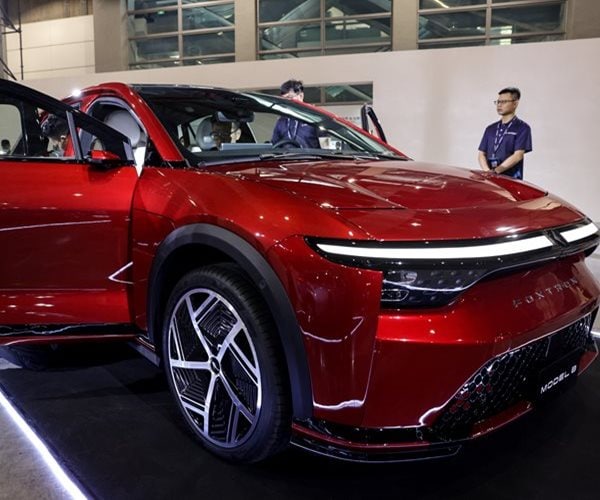[ad_1]
Electric vehicle manufacturers have exaggerated the driving range of their vehicles, sometimes by more than twice as much as advertised, according to a study by SAE International.
On average, electric vehicles fall short of their advertised range by 12.5%, according to the Society of Automotive Engineers study. The study included 21 different brands, and revealed that EV manufacturers as a whole inflate the range of their vehicles far beyond their actual capabilities.
Tesla seems to be inflating the numbers far more than other brands. The range displayed on Tesla vehicle’s dashboard is 26% lower than the car’s ability. Tesla even created a secret team to suppress thousands of driving range complaints online. Tesla rigged the dashboard readouts in its electric cars to provide “rosy” projections of how far owners can drive before needing to recharge, a source told Reuters.
Has Tesla been tricking its consumers all along? Anyone who knows anything about electric cars is aware of their number one problem: driving range. Many EVs can’t travel very far before needing a recharge. In the same way a fuel gauge lets you know when to fill up, EVs have in-dash sensors that project how much driving range is left in their vehicles. So what’s the truth?
Last year Tesla became so inundated with driving-range complaints that it created a special team to cancel owners’ service appointments. This led to a slew of service requests by Tesla customers, though employees often denied these requests because the batteries did not need to be fixed; they were just operating at a level far below advertised. Tesla employees were informed that they save the company $1,000 every time they turn down a service request, according to Reuters.
The worst part of what they called the “Diversion Team” is that members would celebrate cancellations by striking a metal xylophone and applauding. Reuters could not establish how long the practice continued. Tesla recently stopped using its diversion team in Nevada to handle range-related complaints, according to the person familiar with the matter. Virtual service advisors in an office in Utah are now handling range cases, the person said. Reuters could not determine why the change was made.
On top of all the many main stream news outlets are reporting that extreme heat can affect how far an electric vehicle travels on a charge. EV range begins to drop at a temperature of about 85 degrees, according to a new study from the Seattle-based battery health data company, Recurrent. They found that range decreases an average of 5% at 90 degrees and 31% at 100 degrees.
How much range a vehicle loses in extreme heat varies by model. At a temperature of 90 degrees, the Ford Mustang Mach-E and F-150 Lightning lost the least range — just 1% compared with EPA estimates. The Nissan Leaf lost 22%, the Chevy Bolt lost 9% and the Hyundai Kona lost 5%. Most Teslas get only 60% of their EPA-estimated range even in moderate temperatures of 60 degrees.
Proving that Tesla isn’t the only automaker with cars that don’t regularly achieve their advertised ranges. Gregory Pannone, co-authored the study of 21 different brands of electric vehicles, published in April by SAE International, an engineering organization. The research found that, on average, the cars fell short of their advertised ranges by 12.5% in highway driving.
The exaggerated range can be attributed to the testing procedures prescribed by the EPA, according to Reuters. Although most manufacturers follow these guidelines, Tesla uses additional testing that may boost the car’s purported range.
“I’m not suggesting they’re cheating. What they’re doing, at least minimally, is leveraging the current procedures more than the other manufacturers,” said Gregory Pannone, an expert on EVs.
This is not Tesla’s first time of being accused of such transgressions. South Korean regulators fined Tesla $2.1 million for exaggerating the performance of their vehicles in 2019. The fine came after it was discovered that Tesla cars drove half of their advertised distance when used in cold weather, according to Reuters.
Whatever an automaker decides, the EPA must approve the window-sticker numbers. This could be a big part of the problem but it’s also false advertising. Tesla has been manipulating its own cars’ dashboard readouts for roughly ten years. The reason for this alleged lie? To boost electric vehicle sales, according to Reuters Investigates.
EV automakers sold drivers on the myth that they could save the planet without changing their own habits. All they had to do was pay them.
Video Link: https://youtu.be/2cwnUGy04FI
You can support me by buying me a cup of coffee. Thanks for subscribing and your support! https://www.buymeacoffee.com/laurenfix
We will be reviewing all of the newest cars on our YouTube channel Car Coach Reports.
Additional articles on our website https://www.CarCoachReports.com
“LAUREN FIX’S GUIDE TO LOVING YOUR CAR” Book – https://amzn.to/3ifDi3j
Total Car Score Podcast ► Hosts: Lauren Fix, Karl Brauer and Javier Mota. https://www.revolverpodcasts.com/shows/total-car-score/
_______________
Lauren Fix, The Car Coach is a nationally recognized automotive expert, media guest, journalist, author, keynote speaker and television host. A trusted car expert, Lauren provides an insider’s perspective on a wide range of automotive topics and safety issues for both the auto industry and consumers. Her analysis is honest and straightforward.
© 2023 Newsmax Finance. All rights reserved.
